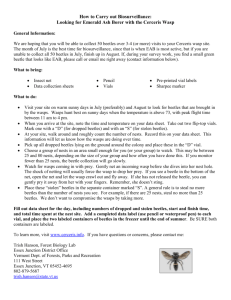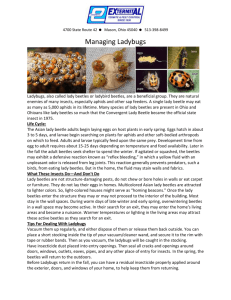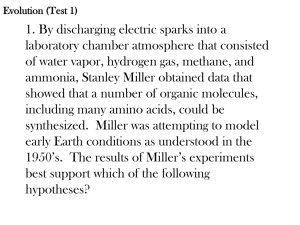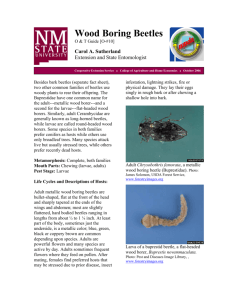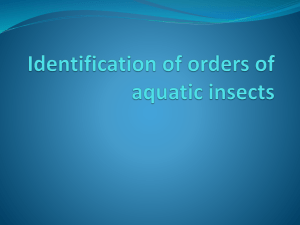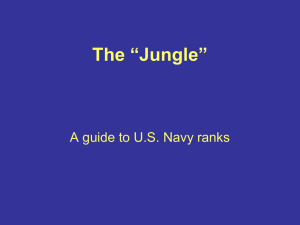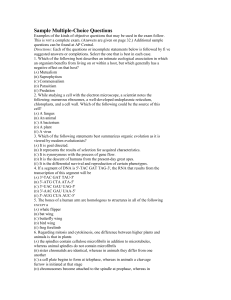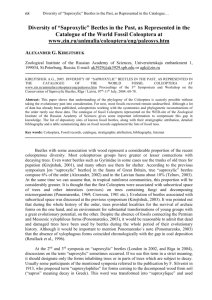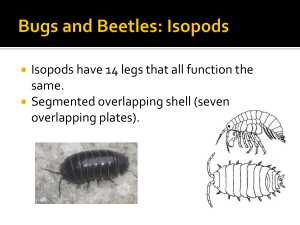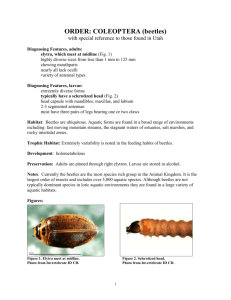Coleoptera
advertisement
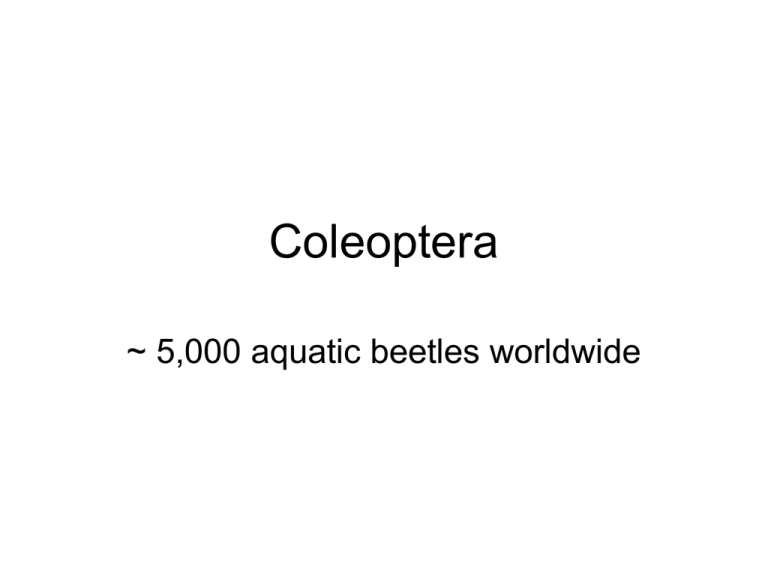
Coleoptera ~ 5,000 aquatic beetles worldwide Most live in substrate: • Adults usually leave water temporarily dispersal. – One time - Elmidae (riffle beetles) – Several times - Dytiscidae, Hydrophilidae Respiration? • 1. Self-contained air reserves (Dytiscidae - diving beetle) • 2. Transcuticular respiration (gills in larvae) • 3. Plastron respiration (adult Dryopidae) • 4. Piercing plant tissues (larval Chrysomelidae) Slender antennae Hind coxae extend posteriorly divide first abdominal segment Swimming hairs on legs Respiration? • 1. Self-contained air reserves (Dytiscids) • 2. Transcuticular respiration (gills in larvae) • 3. Plastron respiration (adult Dryopidae) • 4. Piercing plant tissues (larval Chrysomelidae) Respiration? • 1. Self-contained air reserves (Dytiscids) • 2. Transcuticular respiration (gills in larvae) • 3. Plastron respiration (adult Dryopidae) • 4. Piercing plant tissues (larval Long toed water beetles Chrysomelidae) Woolly hairs except last abdominal segment Short antennae Respiration? • 1. Self-contained air reserves (Dytiscids) • 2. Transcuticular respiration (gills in larvae) • 3. Plastron respiration (adult Dryopidae) • 4. Piercing plant tissues (larval Chrysomelidae) Varied life histories • Some larvae occur year round, adults for short period (Psephenidae) Water pennies Larvae are aquatic, adults terrestrial Varied life histories • Others occur as larvae and adults year round – Elmidae = riffle beetles Long antennae 5-segmented tarsi Crawl on bottom - do not swim = no swimming hairs on hind legs 5-6 abdominal segments Varied life histories • Others have long adult; larva only around a few weeks - Hydrophilidae – Water scavenger beetles Adult 3 segmented club antennae 5 segmented tarsi Larvae Large mandibles 4 segmented legs Adults = terrestrial! Scirtidae = marsh beetles • Small (5 - 15 mm) • Larvae have long antennae • 4-segmented legs, single claw Beetle pupae are mostly terrestrial • Under stones or logs • Few marine beetles - substrate dwellers Larval morphology = diverse • Sclerotized head capsule – Mandibles, maxillae, labium • Gill-like appendages in some (Gyrinidae = whirligig beetles) Coleoptera Coleoptera Coleoptera Coleoptera The key 2 compound eyes that appear to be divided = Gyrinidae, whirligig beetles Eyes not divided, hind coxae divided into plates that cover abdominal segments 1-2, or 3 • Haliplidae, crawling water beetles Hind coxae not expanded into plates, divide abdominal segment 1 • Dytiscidae, predaceous diving beetles Hind coxae not dividing abdominal segment 1, antennae clubbed with cuplike segment at base • Hydrophilidae, water scavenger beetles Antennae short with comb-like club, body length 5-6.5 mm • Dryopidae, long-toed water beetles Antennae w/o comblike club, body length < 4.5 mm Elmidae, riffle beetles

